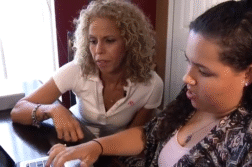ORLANDO, Fla. (Ivanhoe Newswire) — The CDC reports that one in four Americans have some degree of noise-induced hearing loss. That’s 34 million people. And the report found that hearing loss didn’t just affect the older population. 20 percent of people in their 20’s were found to have some form of hearing loss and the worst part is many do not even know it. But, the good news: it is preventable.
We all know that loud noises can affect hearing. But did you know that it takes only two minutes at a rock concert to cause irreversible damage to your hearing? Any noise above 85 decibels, the sound level of a blow dryer or a blender, can cause damage. That doesn’t mean you have to avoid all concerts, but wearing earplugs can reduce the noise level by about 30 percent. While listening to music on your own personal devices use the 60:60 rule, have the music at 60 percent of the maximum volume for no more 60 minutes a day. You don’t have to pump up the volume to hear if you choose noise-cancelling headphones that block out distracting background noise. Also give your ears a hearing detox. You will need at least 16 hours of noise rest for your ears to recover after spending two hours listening to loud music at places such as a nightclub. And get your hearing checked. Checking them out now can prevent problems later.
There are various apps you can download that can monitor your exposure to loud noise. Sound-meter and decibel-meter are both free apps that provide accurate sound level readings to help prevent hearing loss.
Contributors to this news report include: Milvionne Chery, Producer; Roque Correa, Videographer and Editor.
To receive a free weekly e-mail on Medical Breakthroughs from Ivanhoe, sign up at: http://www.ivanhoe.com/ftk



